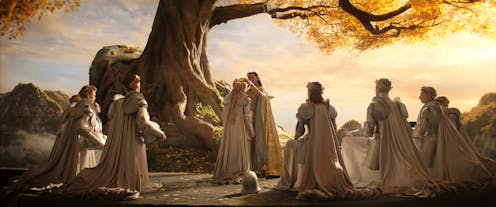
With Lord of the Rings: Rings of Power having aired there has been a resurgence of interest in the vibrant fantasy world created by J.R.R. Tolkien over a century ago. What many might not know is that there is a whole universe in several books that expand what we know outside of The Lord of the Rings and The Hobbit.
For those not familiar with the new television series, it is set in the Second Age of Tolkien’s mythology. To give that some perspective, his most famous works, The Hobbit (1937) and The Lord of the Rings (1954–55), are set during the Third Age, which means that the events of the show take place approximately four and a half thousand years prior to the events of Lord of the Rings.
The universe created by Tolkien is vast, with an incredible depth of vision and detail that inspires people to this day. While Peter Jackson’s Lord of the Rings film trilogy is widely considered to be a masterpiece of cinema, he was still obliged to make alterations to Tolkien’s story, and took even more liberties with the less well-received Hobbit trilogy.
The Amazon streaming service only has the rights to the appendices to the Lord of the Rings books and The Hobbit so the film-makers have had to draw all their material only from these appendices. This has resulted in sweeping changes to the lore written by Tolkien, so if you want to know the true world that Tolkien envisioned, any of the books listed below will provide readers with the genuine experience created by one of the greatest fantasy writers of all time.

This article is part of Quarter Life, a series about issues affecting those of us in our twenties and thirties. From the challenges of beginning a career and taking care of our mental health, to the excitement of starting a family, adopting a pet or just making friends as an adult. The articles in this series explore the questions and bring answers as we navigate this turbulent period of life.
You may be interested in:
Lord of the Rings: Rings of Power – a cheat’s guide to Middle-earth before you watch the new show
Salman Rushdie: where to start with this pioneering and controversial author
The Silmarillion
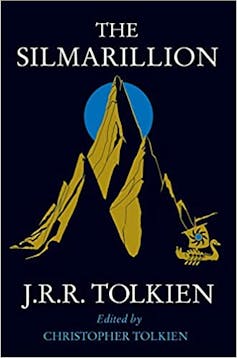
The most famous of these works is The Silmarillion (1977). Unlike The Hobbit and Lord of the Rings, The Silmarillion is a collection of epic tales worked (by Christopher Tolkien) into a single narrative. It begins with the creation myth for Tolkien’s world and includes his great romantic epic concerning the adventures of Beren, a mortal Man, and Luthien, an Elven princess. These two characters are of particular relevance to anyone seeking to explore Tolkien’s mythology as they are the ancestors of many important figures from the major narratives, such as Aragorn and Elrond. They were also personally significant to Tolkien himself as he was inspired to write their love-story by his real-life romance with his wife, Edith. On Tolkien’s gravestone in Oxford is inscribed the name “Beren”, while on Edith’s is the name “Luthien”.
The Tales
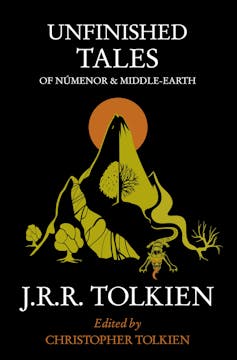
The stories in Unfinished Tales (1980), edited by Christopher Tolkien, offer more background details regarding some of the most famous characters, including Gandalf. The anthology includes many of Tolkien’s notes about the world he was building, notes that he may not have intended to publish but which nevertheless offer a fascinating insight into his methodology and influences.
The two-volume Book of Lost Tales (1983–84) was compiled by Christopher Tolkien from his father’s notes to form the opening volumes of the all-encompassing 12-volume “History of Middle Earth” (1983-1996). While the stories are broadly similar to those told in The Silmarillion they go into more (some have said too much) detail and include extensive annotations added by Christopher with the intention of making them more like encyclopedias, or at least reference guides to Tolkien’s source material, rather than simple narratives.
On Fairy-Stories
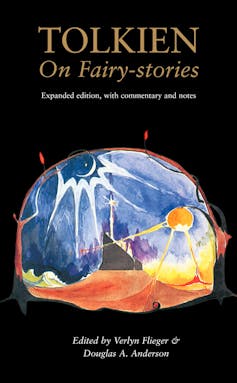
On Fairy-Stories is an essay Tolkien wrote in 1939, two years after the initial publication of The Hobbit. Given originally as a lecture at the University of St Andrews, the text was published in 1947 in Essays Presented to Charles Williams, who was one of the Inklings, the literary discussion group in Oxford in the 1930s and 1940s that included Tolkien and C.S. Lewis.
Tolkien’s essay is noteworthy because it articulates his early opinion regarding what constitutes a “fairy story”, a genre we now refer to as “fantasy” or even “high fantasy” in Tolkien’s case. The essay essentially makes the claim that stories involving fairies or magical creatures that are set in the real world are not true fairy stories. For works of fiction to be truly considered as fantasy they must also be set in entirely imaginary worlds (unlike C. S. Lewis’s Narnia books, for example). Tolkien ultimately justifies this assertion with the argument that the relationship between language and imagination can only develop with one driving the other.
The Adventures of Tom Bombadil
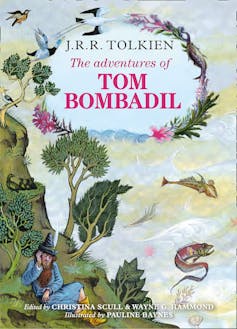
Given that he is one of Tolkien’s most enigmatic characters, The Adventures of Tom Bombadil (1962) is a genuine curiosity. The book was published in Tolkien’s lifetime but it is a collection of poetry rather than a novel.
Tom Bombadil appears in Lord of the Rings but was written out of the film version. In The Fellowship of the Ring, he uses his extensive powers to rescue the Hobbits, but we never learn who or what he is, only that he alone is immune to the One Ring.
Inevitably, Tom has been the subject of much debate and speculation but Tolkien himself said of Tom: “Even in a mythical Age there must be some enigmas.” In The Adventures of Tom Bombadil, there are some intriguing nuggets about the character, but no definitive answers. While some might argue that Tolkien’s poetry is an acquired taste, the volume nevertheless provides further insights into the world that Tolkien spent his life building.
Helen Fulton receives funding from the Leverhulme Trust. She is affiliated with the Learned Society of Wales.
This article was originally published on The Conversation. Read the original article.
!["[T]he First and Fifth Amendments Require ICE to Provide Information About the Whereabouts of a Detained Person"](https://images.inkl.com/s3/publisher/cover/212/reason-cover.png?w=600)






